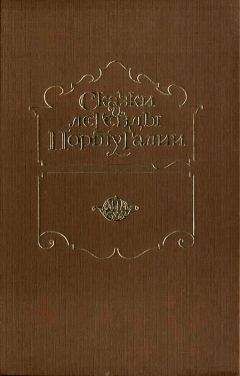113
Thurman H. (1953). Meditations of the heart. Boston: Beacon Press.
Эта книга – увлекательнейший обзор исследований по вопросам власти над другими (в особенности того, как и когда она используется). Книга написана ведущими специалистами в этой области. Adam Galinsky and Maurice Schweitzer: Friend and foe: When to cooperate, when to compete, and how to succeed at both (New York: Crown).
Magee J. C. & Galinsky A. D. (2008). Social hierarchy: The self-reinforcing nature of power and status. The Academy of Management Annals, 2, 351–398, 351.
Smith P. K. & Galinsky A. D. (2010). The nonconscious nature of power: Cues and consequences. Social and Personality Psychology Compass, 4, 918–938.
Практически все исследования, описанные в этой главе, касаются власти над другими (социальной силы), но я считаю, что многое в них верно и для власти над собой (личной силы), поскольку и та и другая дают ощущение контроля над ситуацией.
Tomaka J., Blascovich J., Kelsey R. M. & Leitten C. L. (1993). Subjective, physiological, and behavioral effects of threat and challenge appraisal. Journal of Personality and Social Psychology, 65(2), 248.
Qin S., Hermans E. J., van Marle H. J., Luo J. & Fernández G. (2009). Acute psychological stress reduces working memory-related activity in the dorsolateral prefrontal cortex. Biological Psychiatry, 66, 25–32; Liston C., McEwen B. S. & Casey B. J. (2009). Psychosocial stress reversibly disrupts prefrontal processing and attentional control. Proceedings of the National Academy of Sciences, 106, 912–917.
Derakshan N. & Eysenck M. W. (2009). Anxiety, processing efficiency, and cognitive performance: New developments from attentional control theory. European Psychologist, 14, 168–176.
Smith P. K., Jostmann N. B., Galinsky A. D. & van Dijk W. W. (2008). Lacking power impairs executive functions. Psychological Science, 19, 441–447.
Stroop J. R. (1935). Studies of interference in serial verbal reactions. Journal of Experimental Psychology 18 (6), 643–662.
Todd A. R., Forstmann M., Burgmer P., Brooks A. W. & Galinsky A. D. (2015). Anxious and egocentric: How specific emotions influence perspective taking. Journal of Experimental Psychology: General, 144, 374–391.
Mor N. & Winquist J. (2002). Self-focused attention and negative affect: A metaanalysis. Psychological Bulletin, 128, 638–662.
Gendolla G. E., Abele A. E., Andrei A., Spurk D. & Richter M. (2005). Negative mood, self-focused attention, and the experience of physical symptoms: The joint impact hypothesis. Emotion, 5, 131–144.
Gilovich T., Medvec V. H. & Savitsky K. (2000). The spotlight effect in social judgment: An egocentric bias in estimates of the salience of one’s own actions and appearance. Journal of Personality and Social Psychology, 78, 211–222.
Gaydukevych D. & Kocovski N. L. (2012). Effect of self-focused attention on post-event processing in social anxiety. Behaviour Research and Therapy, 50, 47–55.
Kuehn M. M., Chen S. & Gordon A. M. (2015). Having a thicker skin: Social power buffers the negative effects of social rejection. Social Psychological and Personality Science, 6, 701–709.
Carney D. R., Yap A. J., Lucas B. J., Mehta P. H., McGee J. & Wilmuth C. (рукопись в процессе подготовки). Power buffers stress – for better and for worse. Взято по адресу: http://faculty.haas.berkeley.edu/dana_carney/vita.html.
Schmid Mast M., Jonas K. & Hall J. A. (2009). Give a person power and he or she will show interpersonal sensitivity: The phenomenon and its why and when. Journal of Personality and Social Psychology, 97, 835–850.
Karremans J. C. & Smith P. K. (2010). Having the power to forgive: When the experience of power increases interpersonal forgiveness. Personality and Social Psychology Bulletin, 36, 1010–1023.
Shepherd S. V., Deaner R. O. & Platt M. L. (2006). Social status gates social attention in monkeys. Current Biology, 16. R. 119, 120.
Anderson C. & Berdahl J. L. (2002). The experience of power: Examining the effects of power on approach and inhibition tendencies. Journal of Personality and Social Psychology, 83, 1362–1377.
Goodstadt B. E. & Hjelle L. A. (1973). Power to the powerless: Locus of control and the use of power. Journal of Personality and Social Psychology, 27, 190–196.
Fast N. J., Burris E. R. & Bartel C. A. (2014). Managing to stay in the dark: Managerial self-efficacy, ego defensiveness, and the aversion to employee voice. Academy of Management Journal, 57, 1013–1034.
Smith P. K., Dijksterhuis A. & Wigboldus D. H. (2008). Powerful people make good decisions even when they consciously think. Psychological Science, 19, 1258– 1259, 1258.
Galinsky A. D., Magee J. C., Gruenfeld D. H., Whitson J. & Liljenquist K. A. (2008). Power reduces the press of the situation: Implications for creativity, conformity, and dissonance. Journal of Personality and Social Psychology, 95, 1450–1466.
Hecht M. A. & LaFrance M. (1998). License or obligation to smile: The effect of power and sex on amount and type of smiling. Personality and Social Psychology Bulletin, 24, 1332–1342.
Keltner D., Gruenfeld D. H. & Anderson C. (2003). Power, approach, and inhibition. Psychological Review, 110, 265–284.
Galinsky A. D., Gruenfeld D. H. & Magee J. C. (2003). From power to action. Journal of Personality and Social Psychology, 85, 453–466.
Magee J. C., Galinsky A. D. & Gruenfeld D. H. (2007). Power, propensity to negotiate, and moving first in competitive interactions. Personality and Social Psychology Bulletin, 33, 200–212.
Ibid.
Guinote A. (2007). Power and goal pursuit. Personality and Social Psychology Bulletin, 33, 1076–1087.
Van der Toorn J., Feinberg M., Jost J. T., Kay A. C., Tyler T. R., Willer R. & Wilmuth C. (2015). A sense of powerlessness fosters system justification: Implications for the legitimation of authority, hierarchy, and government. Political Psychology, 36, 93–110.
Kang S. K., Galinsky A. D., Kray L. J. & Shirako A. (2015). Power affects performance when the pressure is on: Evidence for low-power threat and high-power lift. Personality and Social Psychology Bulletin, 41, 726–735.
Nickols R. A. (2013) The relationship between self-confidence and interpretation of competitive anxiety before and after competition (Doctoral dissertation). Взято по адресу: ProQuest. (Dissertation number 3560269.)
Stajkovic A. D. & Luthans F. (1998). Self-efficacy and work-related performance: A meta-analysis. Psychological Bulletin, 124, 240–261.
Еще несколько фактов: у самцов уровень тестостерона в 7–8 раз выше, чем у самок, но действует тестостерон на самцов и самок одинаково. Небольшие количества тестостерона выделяются также корой надпочечников.
To learn more about the behaviors that correlate with testosterone and cortisol in various species, see Mehta P. H. & Josephs R. A. (2010). Testosterone and cortisol jointly regulate dominance: Evidence for a dual-hormone hypothesis. Hormones and Behavior, 58(5), 898–906.
Sapolsky R. M. (1991). Testicular function, social rank and personality among wild baboons. Psychoneuroendocrinology, 16 (4), 281–293.
Подробнее см. Hamilton L. D., Carré J. M., Mehta P. H., Olmstead N. & Whitaker J. D. (2015). Social neuroendocrinology of status: A review and future directions. Adaptive Human Behavior and Physiology, 1 (2), 202–230; Mehta & Josephs, Testosterone and cortisol jointly regulate dominance.
Sherman G. D., Lee J. J., Cuddy A. J. C., Renshon J., Oveis C., Gross J. J. & Lerner J. S. (2012). Leadership is associated with lower levels of stress. Proceedings of the National Academy of Sciences, 109, 17903–17907.
Обзор этих и смежных исследований о связи стресса и качества деятельности см. в LeBlanc V. R. (2009). The effects of acute stress on performance: Implications for health professions education. Academic Medicine, 84 (10), 25–33.
Mehta & Josephs, Testosterone and cortisol jointly regulate dominance.
Sherman G. D., Lerner J. S., Josephs R. A., Renshon J. & Gross J. J. (2015). The interaction of testosterone and cortisol is associated with attained status in male executives. Journal of Personality and Social Psychology. Взято по адресу: http://scholar.harvard.edu/files/jenniferlerner/files/sherman_lerner_et_al._in_press_ testosterone_cortisol_and_attained_status_jpsp.pdf.
Mehta P. H. & Prasad S. (2015). The dual-hormone hypothesis: A brief review and future research agenda. Current Opinion in Behavioral Sciences, 3, 163–168.
Jiménez M., Aguilar R. & Alvero-Cruz J. R. (2012). Effects of victory and defeat on testosterone and cortisol response to competition: Evidence for same response patterns in men and women. Psychoneuroendocrinology, 37, 1577–1581.
Edwards D. A. & Casto K. V. (2015). Baseline cortisol moderates testosterone reactivity to women’s intercollegiate athletic competition. Physiology & Behavior, 142, 48–51.
Edwards D. A. & Casto K. V. (2013). Women’s intercollegiate athletic competition: Cortisol, testosterone, and the dual-hormone hypothesis as it relates to status among teammates. Hormones and Behavior, 64, 153–160.
Lee J. J., Gino F., Jin E. S., Rice L. K. & Josephs R. A. (2015). Hormones and ethics: Understanding the biological basis of unethical conduct. Journal of Experimental Psychology: General, doi: 10.1037/xge0000099; Science Daily (2015, July 28). Hormones influence ethical behavior, experts say. Взято по адресу: http://www. sciencedaily.com/releases/2015/07/150728110809.htm.
Fiske S. T. (1993). Controlling other people: The impact of power on stereotyping. American Psychologist, 48, 621–628.
![Эми Кадди - Присутствие [духа]. Как направить силы своей личности на достижение успеха](https://cdn.my-library.info/books/221700/221700.jpg)




